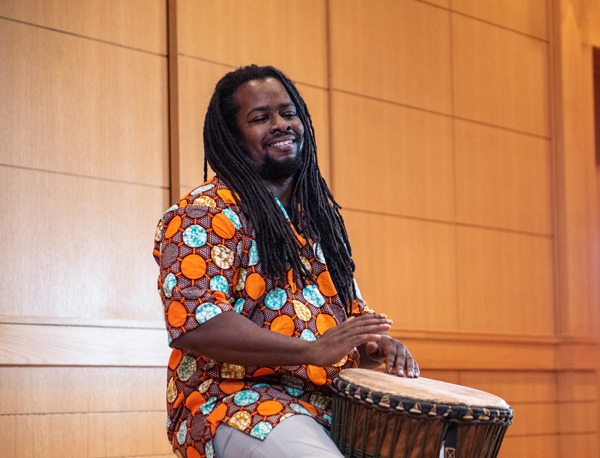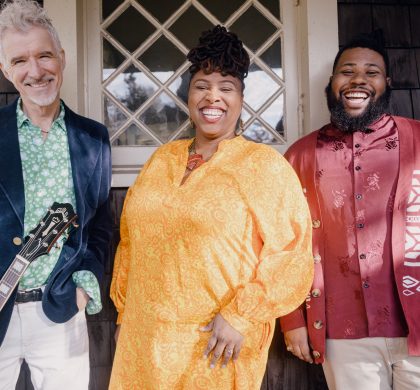Using Music to Boost Engagement

Jun 11, 2024
Singing, dancing, dramatic play, and puppetry can help children develop foundational skills in math, science, and literacy. Musical experiences, in particular, have been shown to boost brain development in children in the areas of language and reading skills, increasing their overall literacy, according to a 2016 study at the University of Southern California’s Brain and Creativity Institute.1
Introducing instruments, songs, and chants into daily activities and lessons, Wolf Trap Teaching Artists provide music strategies that support children’s learning and promote their overall growth and development. Here are some helpful arts experiences they’ve developed to help early childhood educators, families, and caregivers use music to promote learning and engagement:
“Wolfie Presents: The Language of the Djembe”
Put on your watching eyes, turn up your listening ears, and adjust your thinking cap! It’s time to learn the language of the djembe drum. In “The Language of the Djembe,” Wolf Trap Teaching Artist Amadou Kouyate employs the djembe, a traditional drum from the Mali Empire, to teach children about the three notes of the drum: bass, tone, and slap. If you don’t have a drum, a table, a container, or even your lap will do! This strategy touches on patterns, counting, and social studies. Accompanying handout provided.
“Wolfie Presents: I’ve Got a Feeling (Down in My Toes)!”
How are you feeling today? Happy or sad, anxious, or excited? Whatever emotion you are experiencing, Wolf Trap Teaching Artist Elias Schutzman reminds us that it’s okay to have feelings – big and small – and that it’s important to share those feelings with friends and family. “I’ve Got a Feeling (Down in My Toes)!” uses music to encourage social-emotional learning. Accompanying handout provided.
“Stages for Learning: Drum Talk (I-Can-Do-It)”
“I. Can. Do. It!” And so can you! Wolf Trap Master Teaching Artist Kofi Dennis demonstrates how he makes his “Drum Talk” in this fun call-and-response experience that teaches steady beat and promotes active listening. This experience also features ways to support children’s understanding of patterns and sequencing and their ability to listen and recall). Accompanying handout and audio files provided.
To learn more music-centered strategies for connecting with young children, visit wolftrap.org/education.
- Children and Music: Benefits of Music in Child Development, Bright Horizons, 25 Feb. 2022, www.brighthorizons.com/resources/Article/music-and-children-rhythm-meets-child-development.
Recommended Posts

Jamming with Jules: Music for Kids of All Ages
Jul 21, 2025 - Education, Experience, For Kids, Institute, Summer


